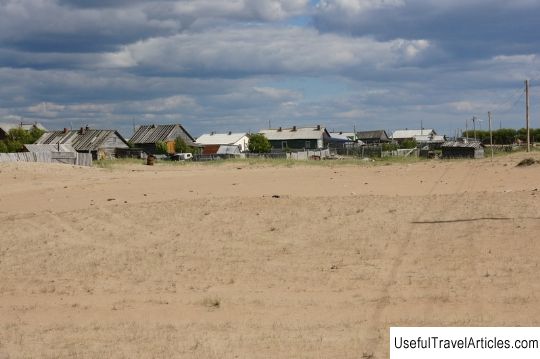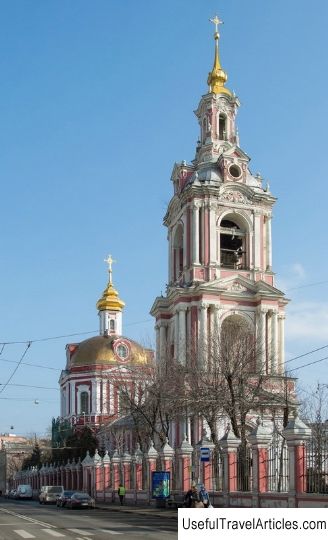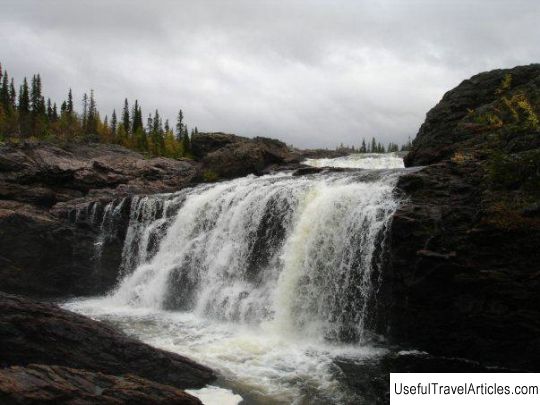Kuzomenskie sands description and photos - Russia - North-West: Murmansk region
Rating: 8,7/10 (1743 votes) 
Kuzomenskie sands description and photos - Russia - North-West: Murmansk region. Detailed information about the attraction. Description, photos and a map showing the nearest significant objects. Photo and descriptionKuzomenskie sands is a large massif of weakly fixed red-colored Terek sands located in the Murmansk region. There is a second name for the Kuzomenskie sands - the Northern Desert, but it is erroneous, although it is often used in the media. The largest northern massif of weakly fixed sands on the shores of the Arctic Ocean is Bunge Land, whose area reaches more than 600 thousand hectares. Kuzomenskie sands are located in the southeastern part of the extended Kola Peninsula, along the coastline of the White Sea, two to the sides of the mouth of the Varzuga River at a distance of about 13 km. The Tersk coast of the Kola Peninsula is one of the places where aeolian deposits are spread, as well as the modern manifestation of wind erosion. This circumstance is facilitated by marine sediments, namely their sandy composition, and the frontal impact on the plain located next to the sea, for the most part, of southeasterly winds. In the middle of the 19th century, in the middle of the 19th century, a new massif of moving sands was formed on the vast territory that adjoins the mouth of the Varzuga, due to factors of anthropogenic impact (grazing, deforestation), which, under the influence of the wind, can literally fill the surrounding forests, the village of Kuzomen and even the river. Today the total area of moving sand is 1600 hectares, taking into account the area on the right bank of the river - almost 800 hectares. Numerous traces of aeolian processes are presented in the form of large blow-out pits, which are covered to varying degrees with rare vegetation; traces of this kind are found among forest territorial zones, close to the borders of sandy open areas. Natural natural renewal of coniferous trees on the surface of such depressions does not occur at all. The village of Kuzomen is located in the zone of distribution of the sandy massif. The village of Kuzomen is a Pomor village located in the Tersk region, which is part of a rural settlement called Varzuga. According to the 2002 census, the population of the village is only 78 people. The village is communicated with the adjacent settlements by road. The village has its own fishing collective farm. It is known that for a long time the Terek coast was mastered by Novgorodians and Karelians. Since the development of these places, the settlers were especially attracted by forests and fishing grounds, for this reason, they founded here a huge number of seasonal settlements, which over time turned into permanent ones. Several burials dating back to the 12th century have been found not far from the village. Territorial areas covered with forests are actively affected by wind erosion in the area of the village of Kuzomen. In addition, such areas are divided into two types: due to the violation, and after the destruction of the soil and vegetation cover, the so-called loose sands appeared, which became the epicenter of erosion, from where this sand was transferred to nearby areas under the influence of the wind, after which it was deposited at the top of the soil layer; the sand layer is about 70 cm, and sometimes more. Most often, the sands are presented in the form of dunes, on which in some places there is a vegetation cover, mostly represented by sandy fescue, as well as sandy spikelet. On this kind of sites, measures are being actively taken to rehabilitate the forest. In the first years of the 21st century, the administration of the Murmansk region began to carry out various measures to stop the activity of the sands. Peat began to be brought in, mixed with sand to restore soil suitable for plants, special barriers were installed to prevent the sand scattering, and tree and grass seedlings were planted. Despite the measures taken, most scientists agree that a complete cessation of the activities of the Kuzomensky sands is unlikely to ever be achieved. It is worth noting that today Kuzomenskie sands are one of the most popular places not only among visiting tourists and fans of sports trips along the sand dunes on motorcycles and dunes, but also among local residents of this region.         We also recommend reading Windmills of Mykonos (Mykonos windmills) description and photos - Greece: Mykonos island Topic: Kuzomenskie sands description and photos - Russia - North-West: Murmansk region. |




